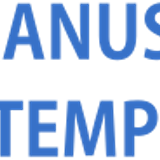EFFECT OF DIETANOLAMIDE (DEA) SURFACTANT ADDITION AND DEEP-SEA BACTERIA ACTIVITIES ON THE BIODEGRADABILITY OF ARTIFICIAL OILY WASTEWATER IN SEAWATER MEDIA
Abstract
Marine oil spills have bad impacts on the marine biota. Oil spill mitigation that is currently safe, effi cient, relatively cheap and easy to implement is bioremediation, that is degradation of oil spills biologically using microorganisms. Petroleum will be more easily dispersed in water when surfactants are added. The surfactants have the ability to increase the bioavailability of petroleum to facilitate bacteria contact with carbon sources as their feed. This study was intended to test the effect of addition of diethanolamide (DEA) surfactants to improve the ability of bacteria to degrade hydrocarbon compound in the seawater media. The biodegradation experiment was conducted in 8-liter seawater media and the ability of DEA surfactants to reduce surface tension, oil content, pH and nutrients on days 0, 1, 3, 6 and 10 were observed. GC-MS analysis was conducted to detect chemical component changes in petroleum. A bacterial consortium of Enterobacter sp., Pseudomonas sp., and Raoultella sp. was utilized. The oil was degraded up to 65.52% with biodegradation rate k = -0.1054 t in the media added with DEA surfactants. The aliphatic fraction detected was C17-C31 n-alkane compound and after biodegradation it became C20- C31. The results showed that DEA surfactants were able to improve the ability of bacterial consortium to degrade petroleum.
Keywords
Full Text:
PDFReferences
Adlina S., 2016. Kinerja osd (oil spill dispersant) dari surfaktan minyak sawit dengan penambahan Pseudomonas aeruginosa ipbcc.b11662 untuk bioremediasi tanah tercemar hidrokarbon minyak bumi. [Tesis]. Bogor (ID): Institut Pertanian Bogor.
Bao M, Pi Y, Wang L, Sun P, Li Y, Cao L., 2014. Lipopeptide biosurfactant production bacteria Acinetobacter sp. d3-2 and its biodegradation of crude oil. Environ Sci: Processes Impacts. 16:897-903. doi:10.1039/c3em00600j.
Bao M, Wang L, Sun P, Cao L, Zou J, Li Y., 2014.Biodegradation of crude oil using an effi cient microbial consortium in a simulated marine environment. Mar Pollut Bull. 64: 1177 1185.doi:10.1016/j. marpolbul.2012.03.020.
Beattie JK, Djerdjev AM, Weale AG, Kallay N, Ltzenkirchen J, Preocanin T, Selmani A., 2014. pH and the surface tension of water. J Colloid and Interface Science. 422:54-57.doi: 10.1016/j. jcis.2014.02.003.
Celovsky H., 2013. Microbial degradation of crude oil or petroleum hydrocarbons in marine environment. Michigas Satta University ENE 487.
Darmayati Y, Sanusi HS, Prartono T, Santosa DA, Nuchsin R., 2015. The effi cacy of bioaugmentation on remediating oil contaminated sandy beach using mesocosm approach. J Ilmu Kelautan. 20(3):143-152. doi: 10.14710/ik.ijms.20.3.143-152.
Darsa KV, Thatheyus AJ, Ramya D., 2014. Biodegradation of petroleum compound using the bacterium Bacillus subtilis. J Science Int. 2(1):20-25. doi: 10.17311/sciintl.2014.20.25.
Desrina R., 2010. Metode kromatografi gas untuk fi ngerprinting tumpahan minyak bumi di perairan. Perlunya korelasi antar-laboratorium. Lembaran Publikasi Lemigas. 44(2):117-128.
Doerffer JW., 2013. Oil Spill Response in the Marine Environment. Oxford (UK): Pergamon Press Ltd.
Dwinovantyo A, Prartono T, Syafrizal S, Udiharto U, Effendi H., 2015. Isolation of deep-sea sediment bacteria for oil spill biodegradation. J ELBA Biofl ux. 7(2):103-108.
Elvina W. 2015. Formulasi oil spill dispersant (osd) dengan bahan baku surfaktan metil ester sulfonat (mes) dan dietanolamida (dea). [Tesis]. Bogor (ID): Institut Pertanian Bogor.
Elvina W, Hambali E, Yani M., 2016. Formulasi dispersan minyak bumi dari surfaktan dietanolamida (dea) dan metil ester sulfonat (mes). J Teknologi Industri Pertanian. 26(1):104-110.
Kumar AG, Vijayakumar L, Joshi G, Peter DM, Dharani G, Kirubagaran R., 2014. Biodegradation of complex hydrocarbons in spent engine oil by novel bacterial consortium isolated from deep sea sediment. Bioresour Technol. 8:1-33.doi:10.1016/j. biortech.2014.08.008.
Marsandi F, Estuningsih SP., 2016. Asosiasi konsorsium bakteri Pseudomonas Pseudoalcaligenes dan Micrococus Luteus dengan Lamtoro (Leucaena Leucocephala (Lamk.) De Wit) dalam upaya meningkatkan bioremediasi minyak bumi. Proceeding Biology Education Conference. 13(1):807-813.
Okoro CC., 2010. Application of seawater microbial inocula for the remediation of hydrocarbon polluted mangrove swamp in the Nigerian oil rich Niger Delta. J Nat Sci. 8(8):152-162.
Patowary. K, Patowary. R, Kalita. M.C, Deka. S., 2016. Development of an Effi cient Bacterial Consortium for the Potential Remediation of Hydrocarbons from Contaminated Sites, Front Microbiol, Published online 2016 Jul 14. doi [10.3389/fmicb.2016.01092]
Poli. A, Finore.I, Romano. I, Gioiello. A, Lama. L, Nicolaus. B., 2017. Microbial diversity in Extreme marine habitats and their biomolecules, Microorganism Journal, 5 (2) 5, PMCID: PMC5488096
Rahmaniar R., 2016. Simulasi biodegradasi minyak menggunakan bakteri laut dalam [Skripsi]. Bogor (ID): Institut Pertanian Bogor.
Rosenberg E, Legmann R, Kushmaro A, Taube R, Adler E, Ron EZ. ,1992. Petroleum bioremediation a multiphase problem. J Biodegradation. 3:337-350. doi:10.1007/BF00129092.
Zam SI. 2011. Bioremediasi limbah pengilangan minyak bumi dengan menggunakan bakteri indigen secara invitro. Prosiding Seminar Nasional Kimia Unesa 2011; 2011 Februari 19; Surabaya, Indonesia. hlm 374-480.
DOI: https://doi.org/10.29017/SCOG.41.2.338

This work is licensed under a Creative Commons Attribution-NonCommercial-NoDerivatives 4.0 International License.






